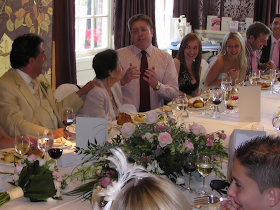< The crowds are fed | Index | The blind man sees >
Strange events take place at night on a dark and stormy Sea of Galilee. The disciples and the crowd lose track of Jesus but he later reappears on the lake. We can learn more about him and about ourselves by reading John's account of these events.
For the background to the signs in John and links to the other articles in the series, please read the index page.
Jesus and his close followers were very familiar with the Sea of Galilee. It was on the shores of this large lake that he called the fishermen Peter and Andrew, James and John.
As fishermen's kids they had known boats and fishing and the conditions of the lake since they were children.
Travelling by boat would have provided a good short-cut to walking around the circumference of this nearly circular expanse of water. This is something they must have done many times before. And it would have been a good way of escaping from the crowds.
Here's the passage from John, then we'll ask ourselves the usual four questions.
When evening came, his disciples went down to the lake where they got into a boat and set off across the lake for Capernaum. By now it was dark and Jesus had not yet joined them. A strong wind was blowing and the waters grew rough. When they had rowed about three or four miles they saw Jesus approaching the boat, walking on the water; and they were frightened. But he said to them, ‘It's me - don’t be afraid!’ Then they were willing to take him into the boat, and immediately the boat reached the shore where they were heading.
The next day the crowd that had stayed on the opposite shore of the lake realised that only one boat had been there, and that Jesus had not entered it with his disciples, but that they had gone away alone. Then some boats from Tiberias landed near the place where the people had eaten the bread after the Lord had given thanks. Once the crowd realised that neither Jesus nor his disciples were there, they got into the boats and went to Capernaum in search of Jesus.
When they found him on the other side of the lake, they asked him, ‘Rabbi, when did you get here?’ (John 6:16-25)
Here are the four questions suggested by Neil Cole with some pointers for finding the answers in the material quoted above.
What does this story tell us about people? - We'll list all the people who are mentioned.
First, there are the disciples. Why did they leave without Jesus? (Hint: check back in verses 14 and 15.) There was a strong wind, so why were they rowing? How do you think they felt, in the dark, with a storm brewing and the waves getting bigger?
Next is the crowd. What do they do when they realise Jesus and the disciples are missing? Why?
What does it tell us about Jesus? - Why do you think Jesus had stayed away until late evening? (Check verse 15.) What was he doing? He was walking on the water, that's a little - unusual! What does it tell us about him. Was he trying to impress or was he just being practical? What was the result of him speaking to the scared disciples? What was the result of having him in the boat?
What does it tell me about myself? - Are you like the disciples or are you like the crowd? Maybe, in some ways, you are like both. Which do you identify with most? Which do you identify with least? Might you have thought and behaved differently? How do you explain what Jesus did?
Who else needs to hear this? - Who do you know who might benefit or be challenged or encouraged by hearing this sign of John?
Additional points - Galilean fishing boats were quite small and storms on the lake can be sudden and fierce. A boat could easily be swamped and it might have been safer to row than to sail. If the wind was in the wrong direction rowing would have been the only solution.
Wikipedia has further images of the 2000-year-old boat and information about its discovery and preservation.
< The crowds are fed | Index | The blind man sees >













